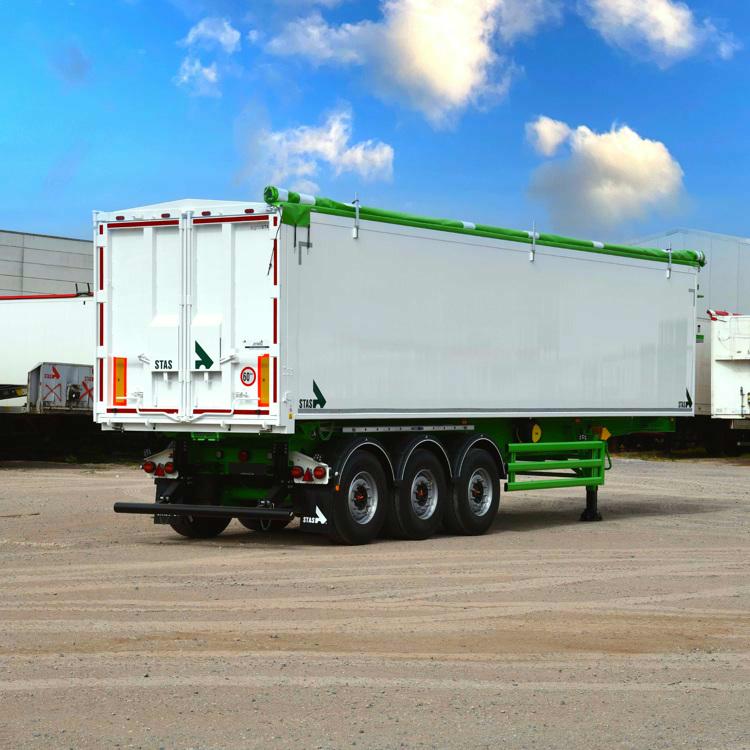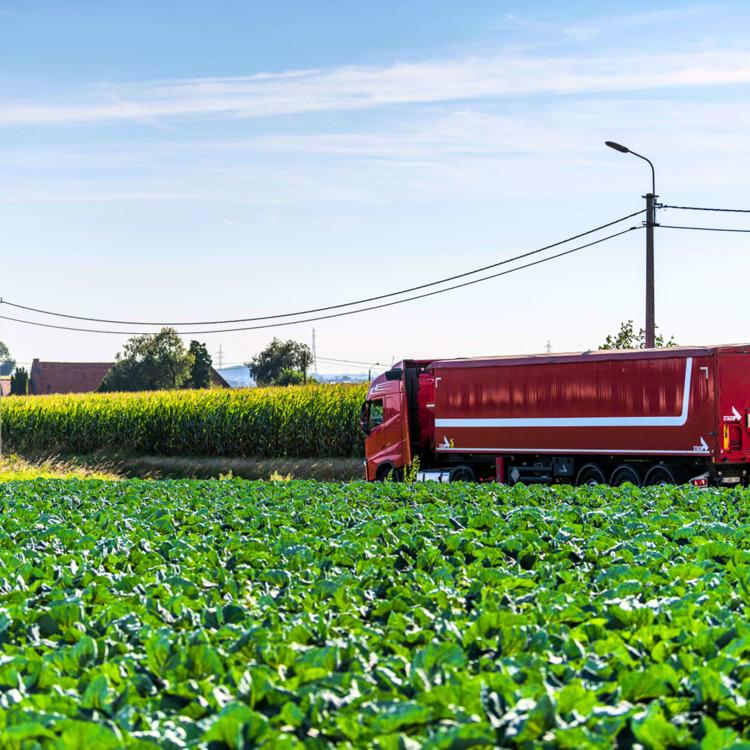Steel versus Aluminium semi-trailers: which material should you choose?

Configuring a semi-trailer involves a lot of choices. One of the most important considerations is the material with which the trailer is manufactured. At STAS, we produce both tippers made completely of steel or aluminium, and moving floor trailers where the body is made of aluminium and you can choose an aluminium or steel chassis. Since this is a crucial choice, we’ve listed everything you need to know to make a well-informed decision.
The use
When transporting corrosive materials, such as chicken manure, champost (mushroom compost) ... steel is not interesting because of its susceptibility to corrosion. Corrosive loads corrode the paint and, in the case of steel, the acid will eventually affect the steel itself, resulting in a shorter life cycle of the chassis and/or body. Aluminium is less affected by this, although in time it will also corrode.
Aluminium is the best choice for loads where spark prevention is important, such as sawdust, because of its spark resistance. For loads that interact with the food chain, aluminium is necessary to prevent rust (iron oxide) from entering the load and therefore the food chain.
As for the body of the trailer, wear resistance depends on the material used on the inside of the body. For example, steel, with Hardox 450 with a hardness of 450HB, offers higher wear resistance than aluminium, which can attain a maximum hardness of 110HB. For loads that cause a lot of wear, such as larger stones or metal scrap, a steel body is recommended. This is because every time a load is unloaded, it scrapes across the body, taking away a few micrometres each time as the load slides out.

Handling and aesthetics
In terms of handling, both steel and aluminium trailers are designed to provide similar driving experiences. Aesthetically, both materials have their own characteristics. Aluminium is more susceptible to scratches than steel, but when a scratch occurs on steel, it will rust and look less appealing. Repainting is labour-intensive, so most chassis look less attractive over time.
Economic
There is a price difference between steel and aluminium semi-trailers. On average, an aluminium semi-trailer is more expensive than a steel semi-trailer. Another economic aspect is repairability. Repairing a semi-trailer instead of buying a new one saves both money and CO2 emissions generated during the production of the vehicle. Repairing is always more sustainable than buying a brand-new vehicle.
Steel tends to rust, while aluminium does not. Although aluminium lasts longer, a semi-trailer with a steel chassis is usually not scrapped because of rust problems. In fact, steel takes a long time to completely rust through.
While steel is often stronger than aluminium, the properties are similar when calculated per kilogram. At STAS, we make maximum use of all the advantages of each type of metal. Thus, we obtain steel and aluminium vehicles that have similar properties in terms of stability and strength.

Sustainability
The carbon footprint plays an important role when it comes to the sustainability of a STAS semi-trailer. Steel has an average carbon footprint of around 2.3 kg CO2eq/kg, while aluminium is more likely to be around 7.8 kg CO2eq/kg. This means that compared to steel, aluminium generates around 3 times more CO2 emissions during its production.
However, during the use phase, aluminium has an advantage because of its lower empty weight. On average, a steel chassis weighs 256 kg more than an aluminium chassis, which means that the aluminium vehicle allows you to carry more load per trip. Note that painting steel is a requirement, while technically not necessary for aluminium. The painting process of aluminium is currently more environmentally damaging because of the etching process. Fortunately, new methods are being developed to eliminate the etching process, which would lead to significant reductions in water consumption and water pollution. The repairability of the material must also be considered here. Obviously, steel is more easily repairable than aluminium.
So, what should you choose?
Hard to say! Several factors play into that decision. In terms of durability and operating costs, aluminium has advantages because of its lower empty weight and reduced fuel consumption. Steel, however, may be more advantageous when it comes to repairability and wear resistance of the body. As always, the best choice for you depends on the purposes for which you are using the vehicle and in what conditions the vehicle will be used.
But lucky for you, we have a team of experienced sales experts who are only too happy to show you the way.






